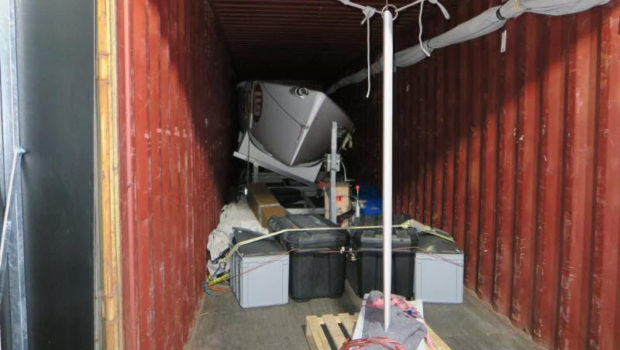Managing the Cost of International Competition
Published on November 1st, 2016
When the 2016 Melges 24 World Championship gets underway on November 29 to December 3, about a third of the 100+ entrants will have made the travel from overseas to Miami, Florida. For each of the international teams, their biggest decision was how to handle their boat needs.
Shipping their existing boat is obviously the preferred option for most people. The up side is that you get to sail your own familiar boat, set up the way you like it, and be ready to go when it arrives at the venue.
Depending on what part of the world they are coming from, and going to, the cost can vary greatly. Europe to Miami and back is not too much of a problem as a large number of shipping lines use this route on their way to Australasia via the Panama Canal.
But from Australia it can be much more expensive as the shipping route typically circles around through China and Japan before heading back across the Pacific, through the Panama Canal and finally back up the East coast of the USA. You are pretty much paying for the time your boat is on the ship.
If you decide to ship, the easiest method for boats on a trailer like the Melges 24 is to Roll-on/Roll- off (RORO). These are usually Car Carrying ship delivering new cars, trucks and boats from manufacturers to other parts of the world. One simply delivers their boat to the departure port at their end and then later picks it up at the receiving port. As to be expected, with all this convenience comes the highest cost to transport boats around the world.
Placing a boat in a shipping container can be the least expensive way to ship it, but for a boat like the Melges 24 it may require a modification to the trailer to allow the boat to rotate and fit into the container. It is also going to take the better part of a day to load and unload and may require a crane or fork lift to get it in and out.
In the USA, logistics services such as One Design Services help transport boats to and from events as well as load and unload the containers. Container shipping can be around half the cost of Roll-on/Roll-off but is a lot more work.
Considering the logistics and costs of shipping, chartering a boat may seem like a more practical thing to do. Boats are offered at different price points depending on their age and condition. People can generally check a boat out by having the owner send photos of critical items like the hull, keel and rudder. However, there will always be the need to spend a few days modifying control lines to each person’s standards or setup.
The charterer usually brings their own sails, and most times, it is a good idea to bring their own ropes, shrouds and forestay just to minimize the chance of breakages. Other costs may be the transport of the boat to and from the regatta if out of town, excess baggage charges on flights for sails and equipment, and perhaps some extra days accommodation while preparing the boat.
The final option, and not necessarily the most expensive (presuming you don’t mind having capital tied up in a second boat), is to purchase a new or second hand boat from the location of the event. This plan provides the boat to use at World Championship and then it can either be sold or shipped home to replace an existing boat.
By offsetting the cost spent on chartering this may prove to be a good option. Many Melges 24 sailors from outside the Americas keep a boat in the USA and fly in a couple of times a year to do a regatta. Boat storage and transport throughout the USA is reasonably affordable.
This video shows how defending champion Chris Rast and the EFG Sailing Team prepared their boat for container transport to the 2016 Worlds:
Source: Kevin Nixon, ACCRU AUS812, Member Asia Pacific, Executive Committee, International Melges 24 Class Association.









 We’ll keep your information safe.
We’ll keep your information safe.